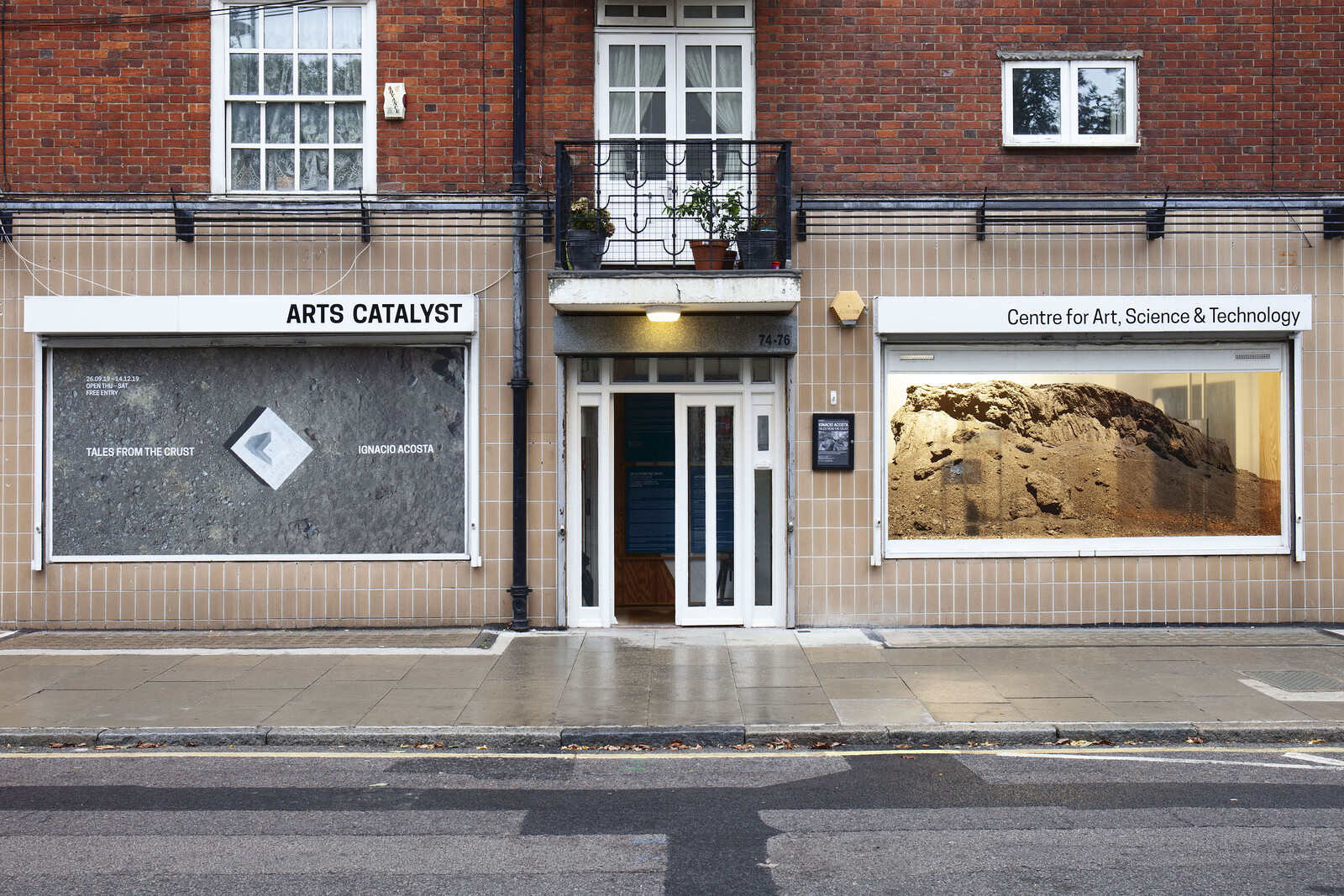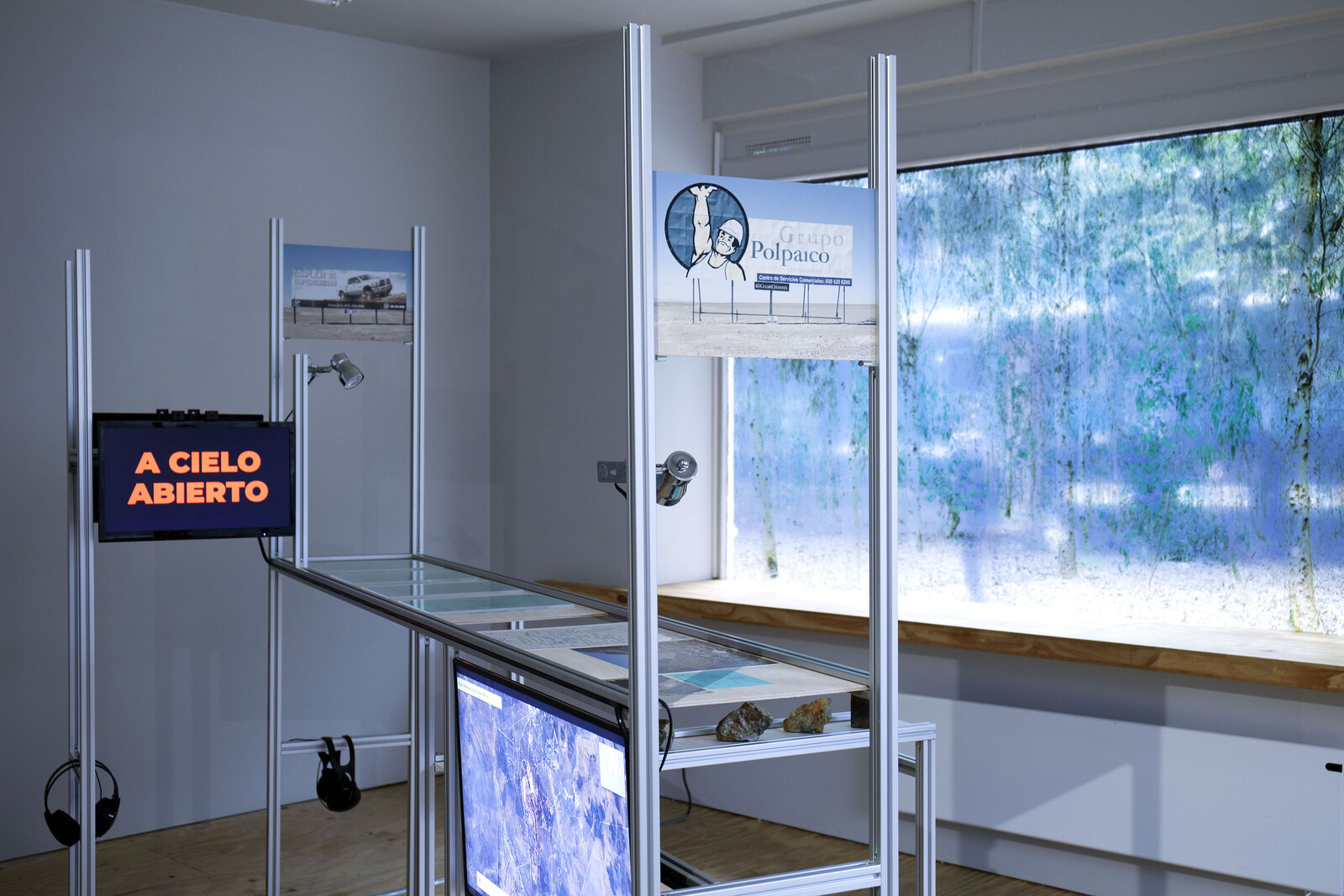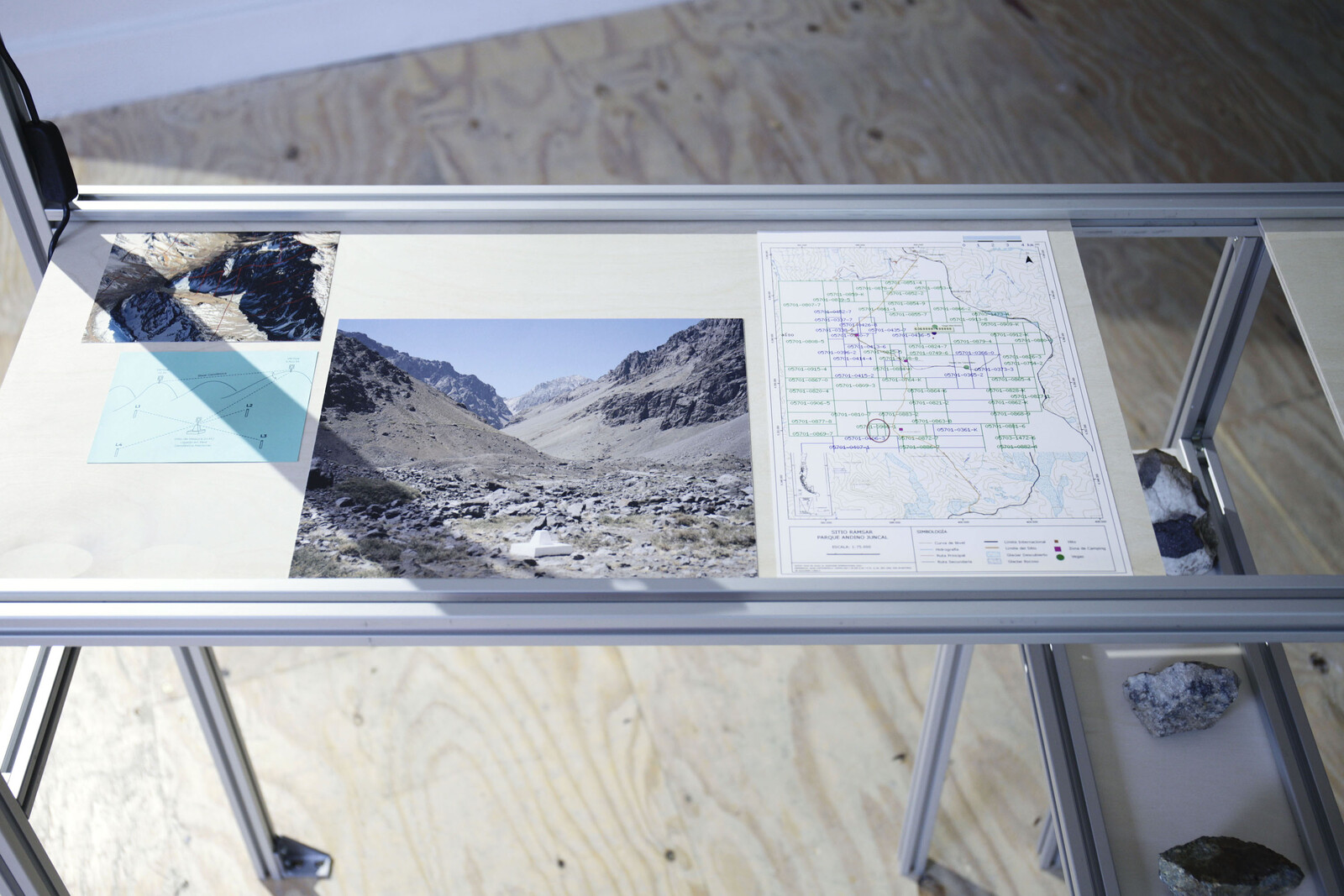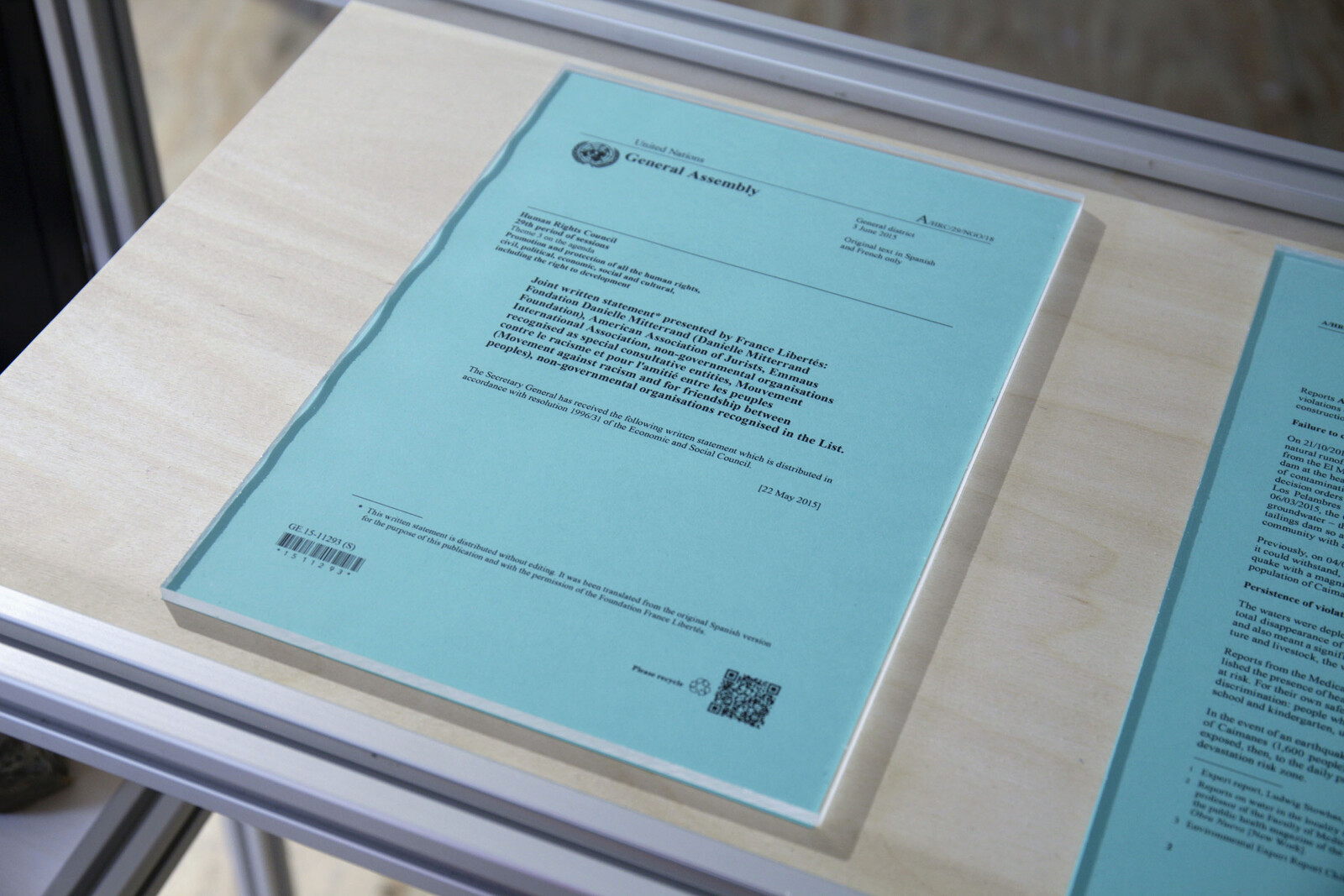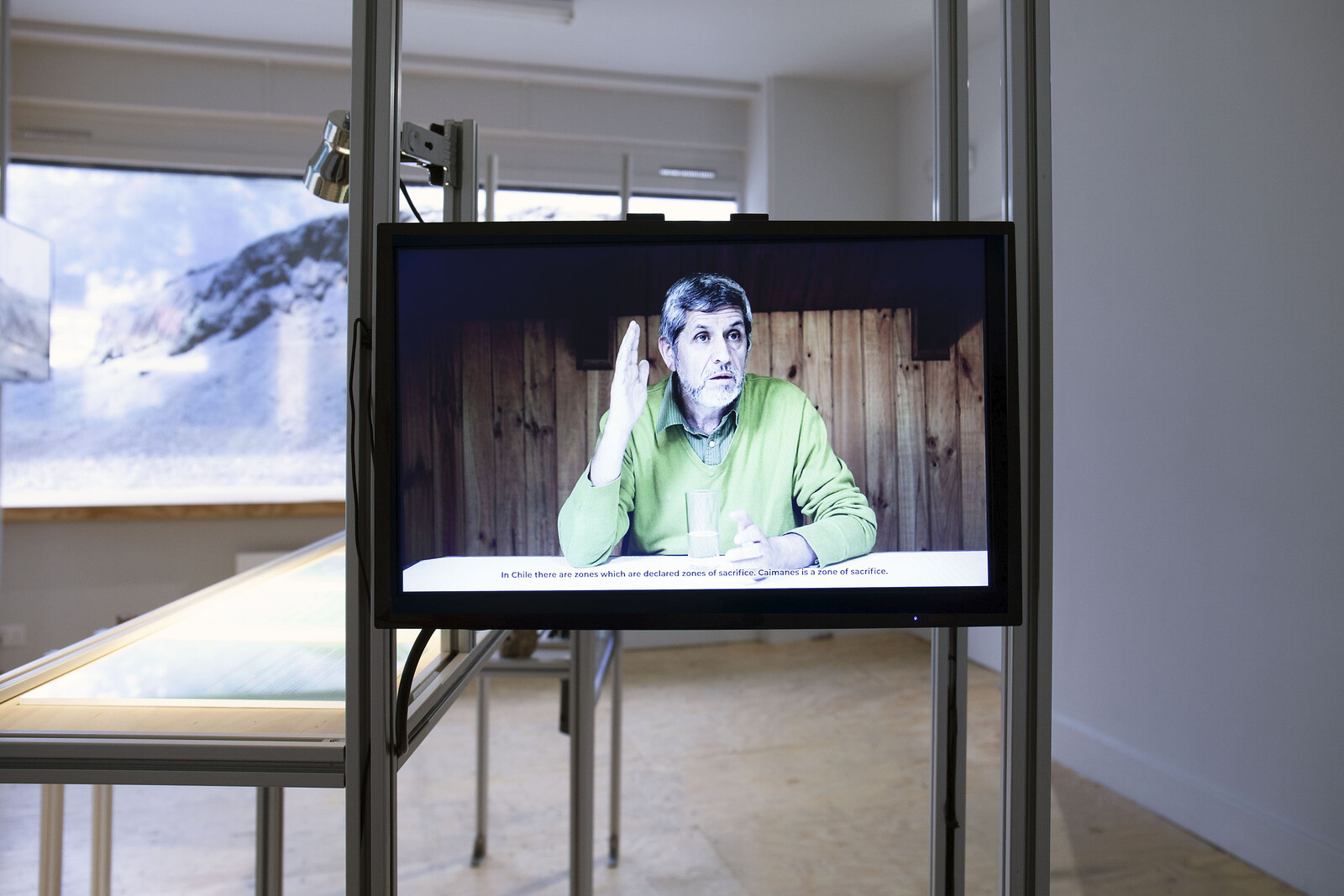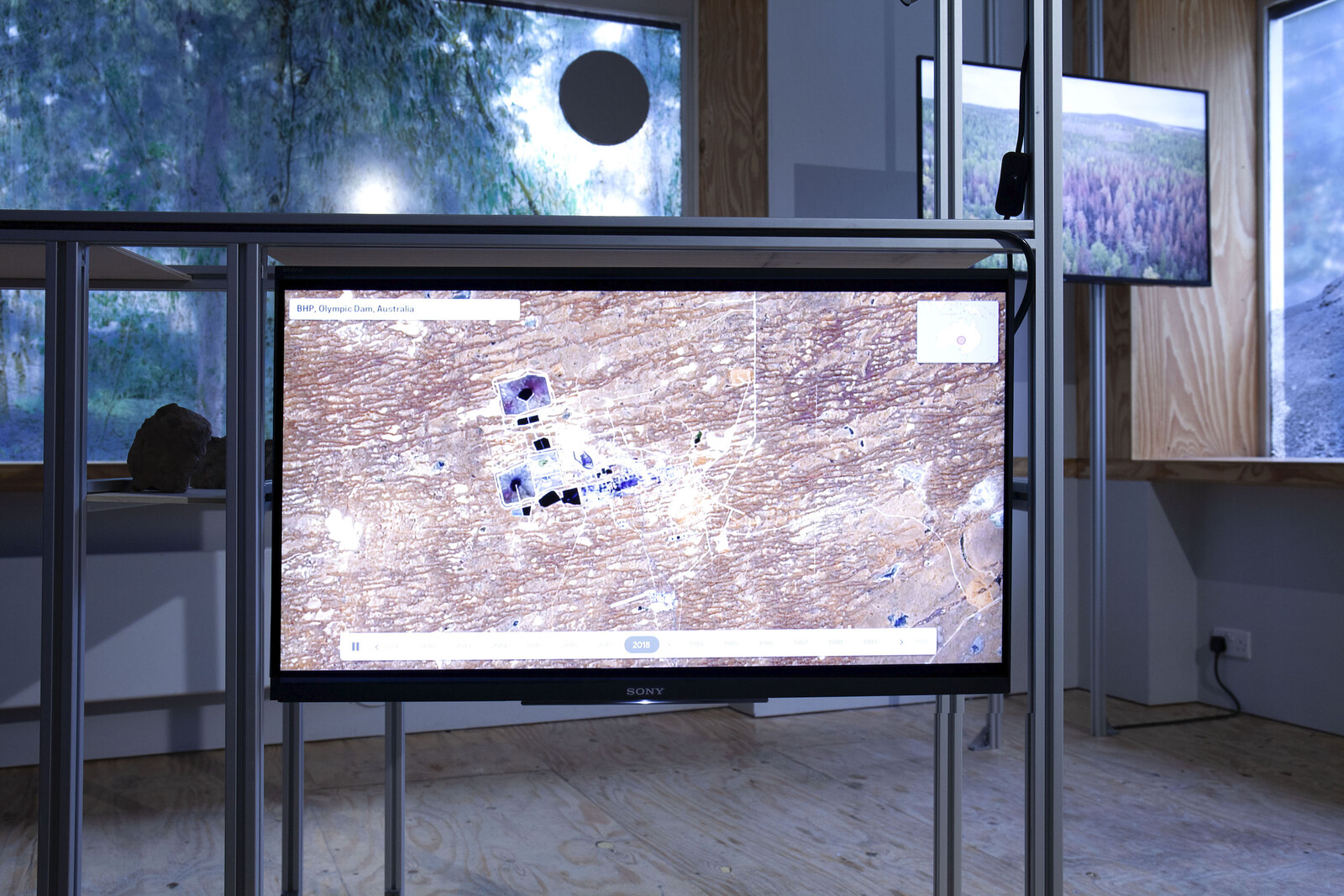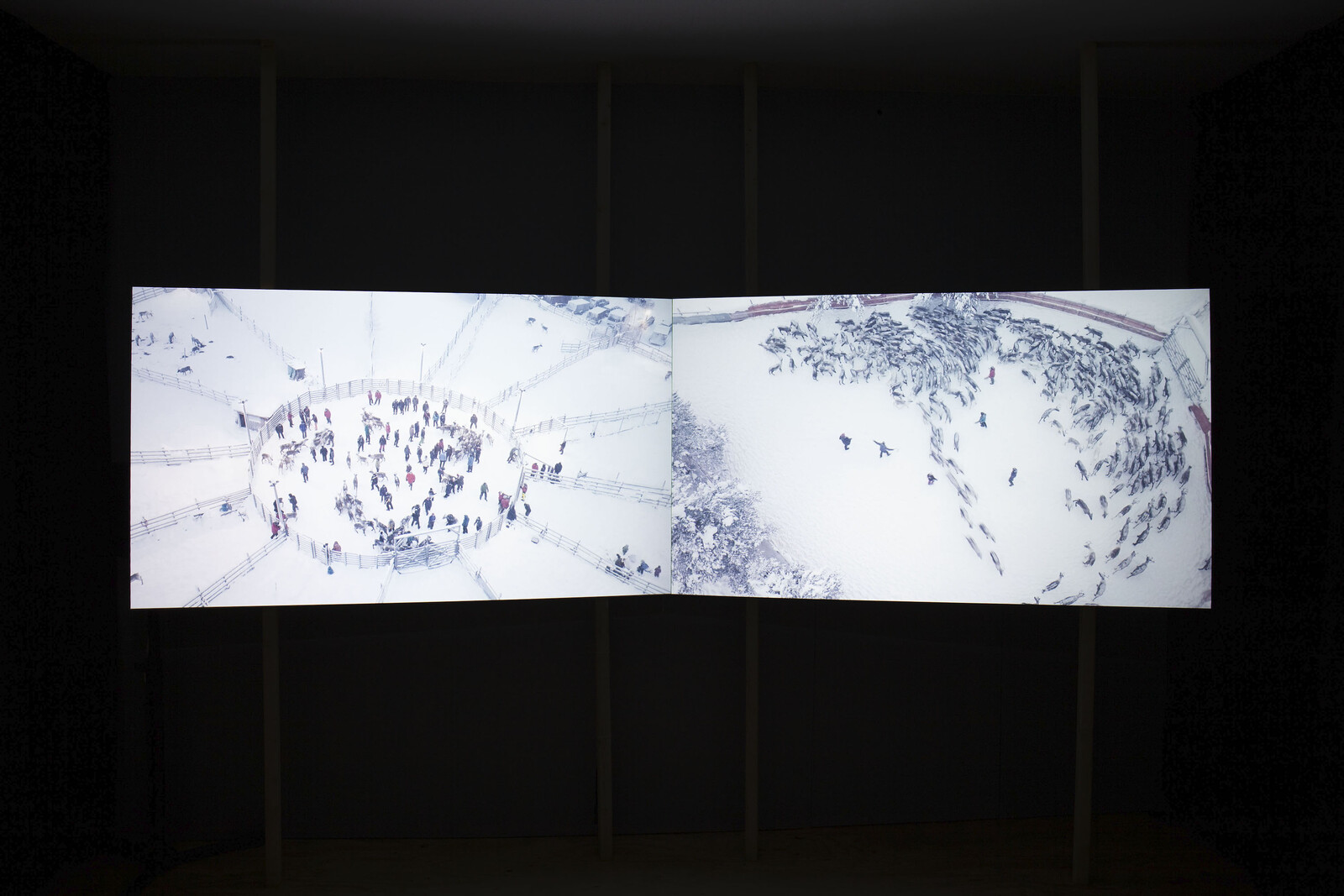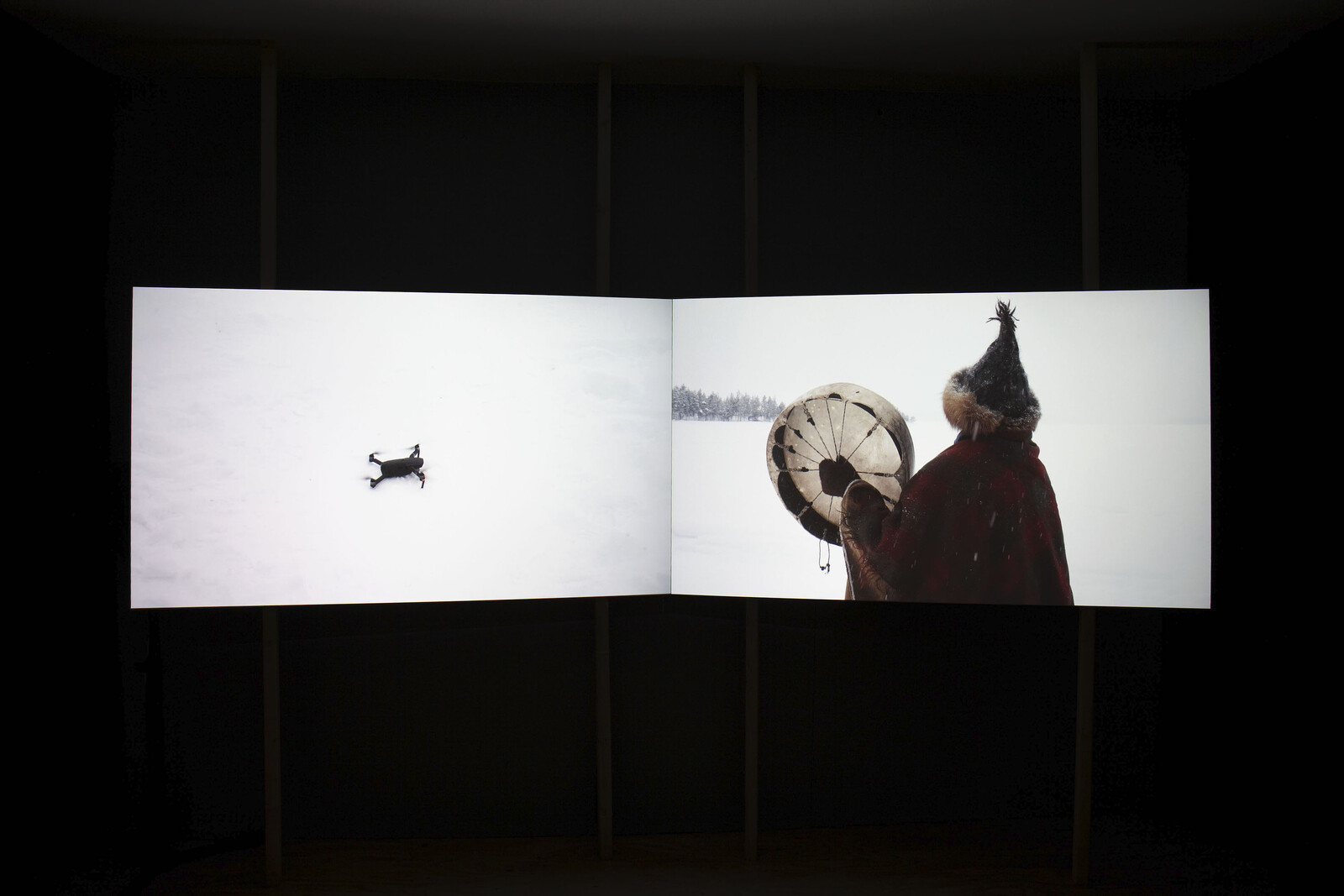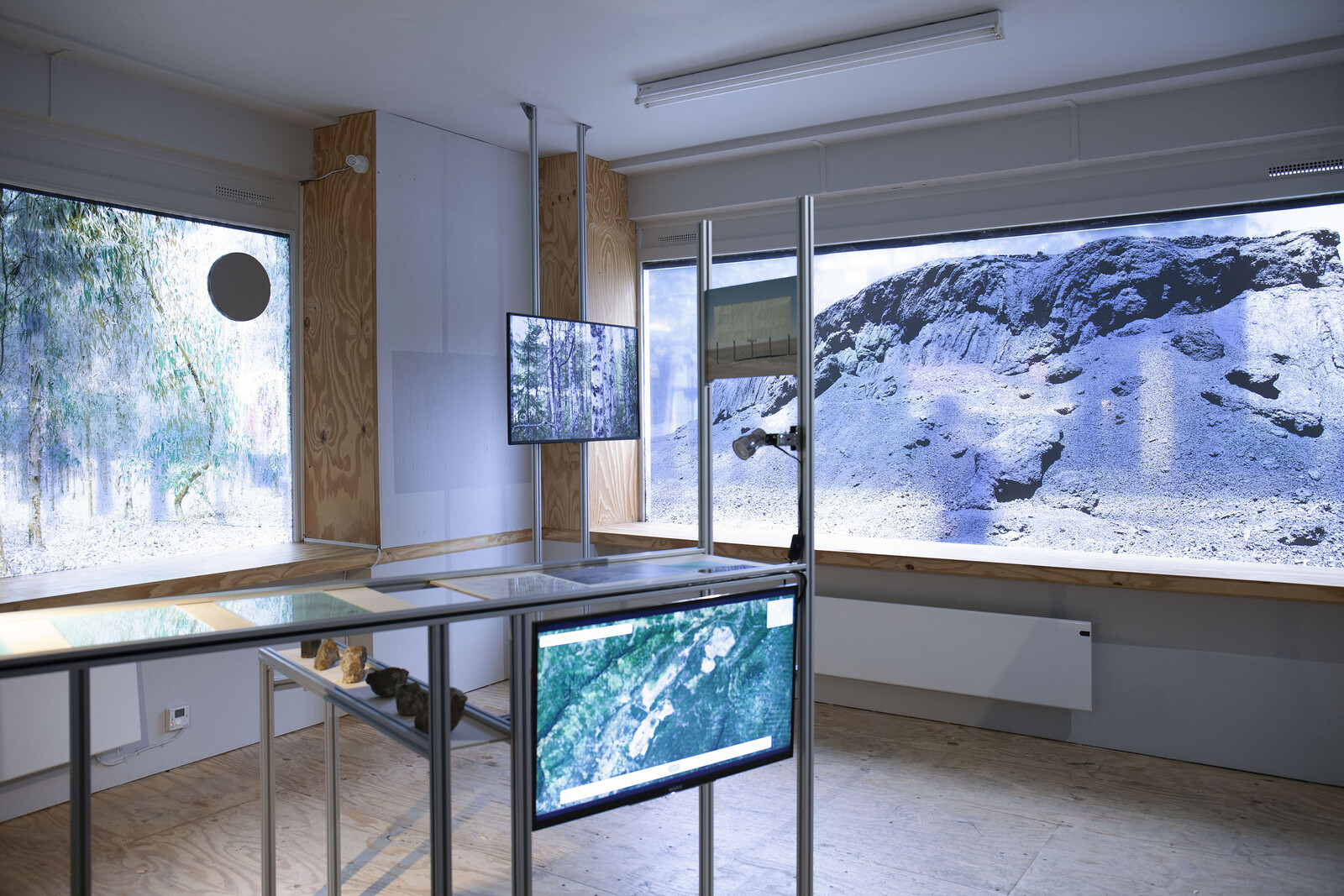What do the gray-white, snow-laden forests of Scandinavia have in common with the dry red sands of the Atacama Desert in Chile? Both, in the words of Silvia Federici, are “sacrifice zones” of capitalism: places that contain riches extracted by multinational mining corporations with little care to the destruction they cause—to water, soil, air; to human and nonhuman communities.1
Ignacio Acosta’s “Tales from the Crust” connects these places in a solo exhibition divided quite neatly into three parts. Covering the gallery’s street-level windows and visible to passers-by are three large-scale photographs of landscapes that have been radically altered by mining: a looming slag heap, a drone shot of a distance marker, and a eucalyptus forest planted to absorb contaminated water. To the right as you enter the gallery is a room of archival materials, filmed interviews, documents, photographs, and rock samples, presented on and around a freestanding metal structure. Here, Acosta not only makes visible his own research process but also acknowledges that struggles against multinational companies are diverse, collective, and ongoing: there are many tales from the crust.
One focus in this room is the corporate group Antofagasta PLC in Chile: a video interview with researcher Patricio Bustamante reveals the exhausting struggles of activists, lawyers, and local communities against the devastating effects of the company’s El Mauro desert waste dump; a photograph shows a demonstration against them in London in 2013; pages from the UN’s damning 2014 statement on El Mauro are laid out in a vitrine. All apparently to little avail. Also in the same room is a looped time-lapse video, produced by Nexus (a research group at Imperial College London), in which satellite images demonstrate the dramatic reshaping of landscapes by mines such as Anglo-American’s in Chile or Rio Tinto’s in Brazil. On a nearby screen is a video interview with a Swedish man in a baseball cap bearing the logo of Finnish forestry company Stora Enso. He recalls battling a forest fire alongside Sami villagers in 1959 and laments the loss of fire-management skills that were once commonplace. On the window ledge are copies of Acosta’s handsomely designed photography book, Copper Geographies (2019), which ranges from epic desert landscapes to architectural typologies to details of mined rocks or electrical wiring.
In the left-hand room is the artist’s recent work Litte ja Goabddá [Drones and Drums] (2018). The 18-minute, two-screen video installation juxtaposes the lives of northern Sweden’s Sami reindeer herders against the impenetrable, fortress-like industrial structures that now dominate parts of the landscape. Acosta’s focus is less on probing historic and ongoing oppression of the Sami and more on the possibilities for a collective fight back. A starting point was the use of drones to make visible the impacts of extractive industries. The video is predominantly shot with a drone, which, combined with the sounds of chainsaws and ominous drumming, reminds me at times of Julian Rosefeldt’s portentous and overblown In the Land of the Drought (2015/17). Drones themselves appear almost like accompanying familiars, hovering above a lone Sami drummer or held in the hands of a blue-haired activist. The video closes with scenes of collective struggle—temporary allegiances forged in the face of a common enemy. Protesters climb tree-felling machinery, a wooden model of a digger is set alight, and an activist gyrates to Swedish rap on a remote forest road.
Litte ja Goabddá opens up a number of complicated ethical, strategic, and artistic problems. For example, Acosta refuses to present the Sami people as a pristine, idealized exemplar of harmonious relations between the human and the nonhuman. They use petrol-powered vehicles and corral reindeer by force. The activists dance to “Tänd alla Ljus” [Light all the Lights] (2015), a song by Silvana Imam that for all the rapper’s avowed anti-racist and anti-homophobic agenda, is ultimately a celebration of exactly the kind of mindless consumption opposed by those who dance so rapturously to it. Drones could not exist without the extractive industries they make visible. It remains unclear how alive Acosta is to these ironies. Many of the questions that the exhibition raises remain unanswered; the most interesting are perhaps ultimately unanswerable.
Acosta navigates difficult terrain. To draw connections between diverse people and places risks effacing important differences: between drums and drones; forestry and mining; people in Sweden, Chile, and so many other places. And to lose sight of these local, historical, living differences might be to echo the brutal blindness of the very transnational corporations against whom so many communities are uniting in struggle. Fortunately, Acosta’s sensitivity to these concerns is evident in the structure of the exhibition: the separation of different tales into different mediums and rooms is not simply convenient (the darkness required to watch a video versus the light needed to read texts); it speaks of a deep understanding of solidarity as a standing-alongside that never seeks to speak over or above.
Silvia Federici, in conversation at Lighthouse Bookshop, Edinburgh, July 3, 2019.
